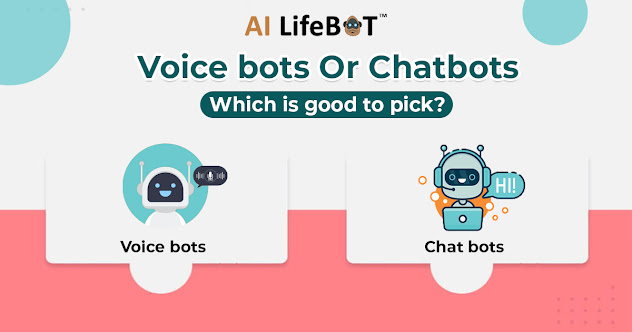LET’S KNOW ABOUT CONVERSATIONAL AI & CHATBOT
The definitions of conversational AI vs chatbot can be ambiguous because they can mean different things to different people. Unfortunately, there is no simple answer because the terms are used in various contexts – sometimes accurately, sometimes incorrectly.
A
chatbot is something that most people can visualize and understand, whereas
conversational AI sounds more analytical or complicated. This is where the true
differentiation occurs. Now, let's start with definitions before delving into
the differences and similarities between a chatbot and conversational AI.
What exactly is a chatbot?
A chatbot, also known as a virtual assistant, is a type of robot that understands human language and can respond to it via voice or text. As a result, "chat" comes before "bot". This is an important distinction to make because not all bots are chatbots (e.g. RPA bots, malware bots, etc.). Chatbots can be as simple as Q&A bots that are programmed to respond to predefined queries. A chatbot's heart is natural language processing (NLP) technology, which allows it to understand user requests and respond appropriately (provided it is trained to do so).
What exactly is Conversational AI?
Conversational AI is a more advanced version of a chatbot. Conversational AI bots frequently combine artificial intelligence (AI) technology with other technologies to deliver more customized customer experiences while decreasing the cost to serve (natural language processing, machine learning, identity management, secure integration, process workflows, dialogue state management, voice recognition, etc.).
Fundamentally, the term "conversational artificial intelligence" is used to set basic rule-based chatbots apart from more sophisticated chatbots. The distinction is particularly important for companies or enterprises that have adopted conversational AI solutions more thoroughly.
The
similarities between the two ideas, however, lie in the fact that they are both
conversational and can be used to communicate with people (such as customers,
employees, etc.) by utilizing conversational interfaces. Conversations can take
place via any number of digital channels, including the web, mobile, messaging,
SMS, email, and voice assistants, whether they are oral or written.
The Development of Conversational AI and Chatbots
Early implementations of conversational chatbots tended to concentrate on straightforward question-and-answer formats that natural language processing (NLP) engines could handle. These were frequently viewed as a practical way to divert incoming customer service questions to a digital channel where a customer could find the answer to FAQs.
These straightforward chatbots, on the other hand, stopped short of carrying out anything more complicated, frequently handing off the request to human agents to continue processing it, particularly when the customer query did not go in the expected direction. Customers had a bad experience as a result, and agents became frustrated. Chatbots gained a bad reputation as they failed, which lingered in the early years of the technology adoption wave.
Conversational
AI chatbots were born as natural language processing technology improved and
businesses became more advanced in their adoption and use cases, moving beyond
the typical FAQ chatbot.
FINAL WORDS!!!
Inbound
or proactive, customer or employee, and on any digital channel—web, SMS, email,
voice, and messaging channels—AILIEBOT chatbots can handle any type of
conversational engagement.
Your
company can choose from a variety of chatbot solutions provided by Our Army of
Bots, starting with onboarding, order and account management, claims
processing, customer service, and renewals.
Additionally,
AILIFEBOT offers enterprise-class security features to guarantee that your
company's data is always safe, never combined, always isolated, and always in
your hands. To improve the chatbot experience for your customers, we make it
simple for you to integrate chatbots with your business data, live chat, and/or
CMS systems.




Comments
Post a Comment